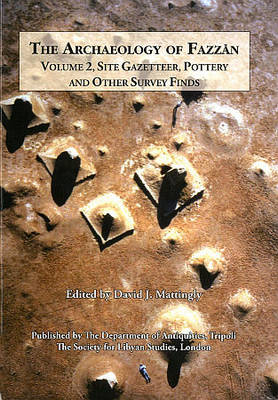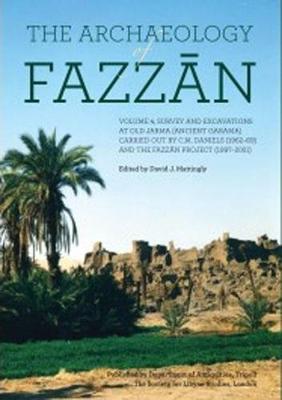Society for Libyan Studies Monograph
2 primary works
Book 7
The Archaeology of Fazzan, volume II, Site Gazetteer, Pottery and other Survey Finds, Edited by David J. Mattingly “The Libyan Sahara is one of the richest desert areas for the study of human adaptation to changing environmental and climatic conditions. This is the second volume in a projected series of four reports detailing the combined results of two Anglo-Libyan projects in Fazzan, Libya’s south-west province. The late Charles Daniels led the first expeditions between l958 and l977, with David Mattingly directing the subsequent Fazzan Project from l997-2001. This second volume presents some of the key archaeological discoveries in detail, including a richly illustrated gazetteer of sites discovered and the first attempt at a full-scale pottery type series from the Sahara. In addition, there are separate reports on the programme of radiocarbon dating carried out, on lithics, metallurgical and non-metallurgical industrial residues and various categories of small finds (including coins, metal artefacts, beads, glass and stone artefacts). The later volumes will provide the detailed evidence from the excavations carried out by both projects.
Book 9
This is the concluding volume of the Archaeology of Fazzān series, bringing to press the combined results of two Anglo-Libyan projects in southern Libya: the pioneering work of Charles Daniels between 1958 and 1977 and the Fazzān Project directed by David Mattingly between 1997 and 2001. The investigations carried out by these two projects allow an entirely new reconstruction and understanding of the historic desert societies of the Libyan Sahara. In particular, the work has shed light on the ancient people known to Greco-Roman writers as the Garamantes, who are now revealed to have been a sophisticated state, with permanent towns and villages and an economy based on oasis agriculture and Saharan trade. This volume presents the results of excavations and survey work at the site of Old Jarma, identifiable with the Garamantian capital, Garama, that also had a long after-life in Medieval and Early Modern times. The Fazzān Project revealed an extraordinary urban story, spanning 10 major construction phases that extended from c.400 BC to the AD 1930s. The detailed publication of the complex stratigraphic evidence and the accompanying finds assemblages opens a fascinating window on the cultural heritage and lifeways of a central Saharan oasis.

